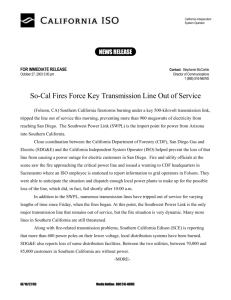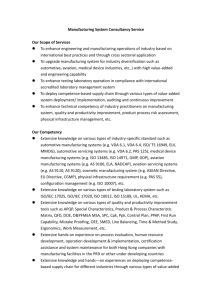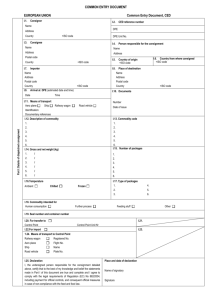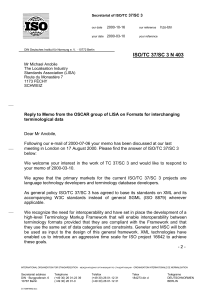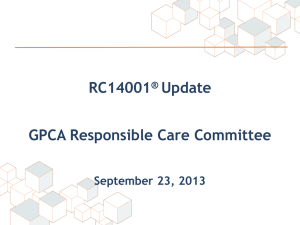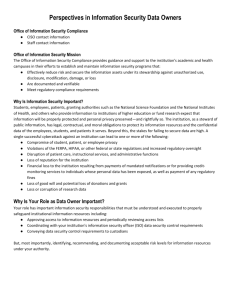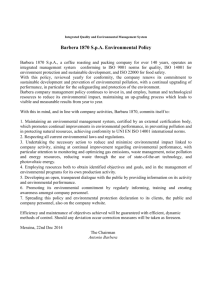Quality in Energy Management An Introduction to ISO 50001
advertisement
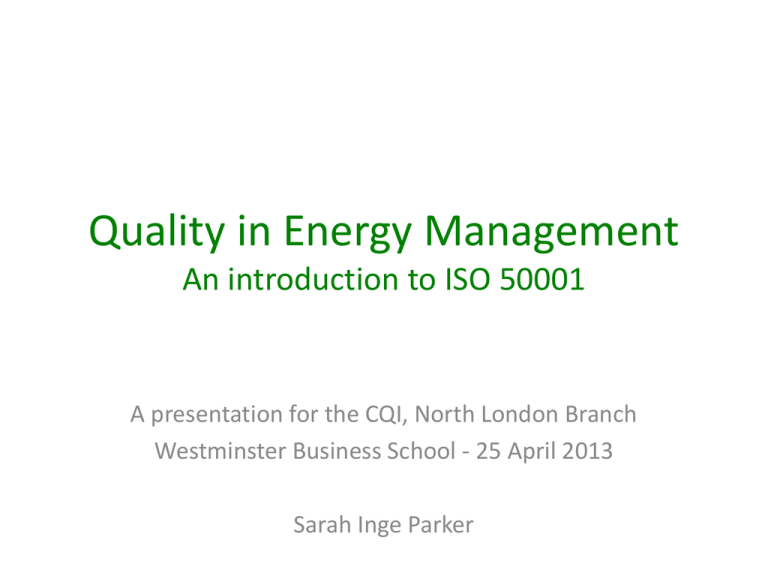
Quality in Energy Management An introduction to ISO 50001 A presentation for the CQI, North London Branch Westminster Business School - 25 April 2013 Sarah Inge Parker Presentation Overview • Why is quality energy management important? • Why use ISO 50001? • ISO 50001: the aims of the standard • ISO 50001: a basic overview • Closing remarks and questions The importance of quality energy management Using energy efficiently helps organisations: • save money and reduce risk • conserve natural resources and • tackle climate change Why use ISO 50001? • ISO 50001 provides a robust framework for organisations (large and small) to develop effective, quality energy management systems based on the model of continual improvement (used for other well-known standards such as ISO 9001 or ISO 14001) – PLAN – DO – CHECK – ACT • This approach makes it easier for organisations to integrate energy management into their overall efforts to improve quality and environmental management • The avoidance of ‘re-inventing the wheel’ • Organisations can make an active commitment to sustainability with it being ‘imposed from above’ ISO 50001 – the aims of the standard • Helps organisations make better use of their existing energy-consuming assets • Facilitates communication and creates transparency on the management of energy resources • Promotes energy management best practices and reinforces good energy management behaviours to assist facilities in the evaluation and prioritisation of new energyefficient technologies implementation • Promotes energy efficiency throughout the supply chain • Facilitates energy management improvements for greenhouse gas emission reduction projects • Allows integration with other organisational management systems such as environmental, and health and safety ISO 50001 – a basic overview The framework of requirements for organisations: • Develop a policy for more efficient use of energy • Fix targets and objectives to meet the policy • Use data to better understand and make decisions about energy use • Measure results • Review how well the policy works, and • Continually improve energy management Continual improvement framework: ‘Plan-Do-Check-Act’ • PLAN: conduct the energy review and establish the baseline, energy performance indicators, objectives, targets and action plans necessary to deliver results in accordance with opportunities to improve energy performance and the organisation’s energy policy • DO: implement the energy management action plans • CHECK: monitor and measure processes and the key characteristics of its operations that determine energy performance against the energy policy and objectives and report the results • ACT: take actions to continually improve energy performance and the EnMS Closing remarks and questions • • • • • Case studies Self assessment and certification Training to use the standard www.iso.org The Energy Institute – www.energyinst.org Thank you Sarah Inge Parker Equinoxe Services, a Discovery Mill Associate www.thediscoverymill.co.uk sarahingeparker@hotmail.com


